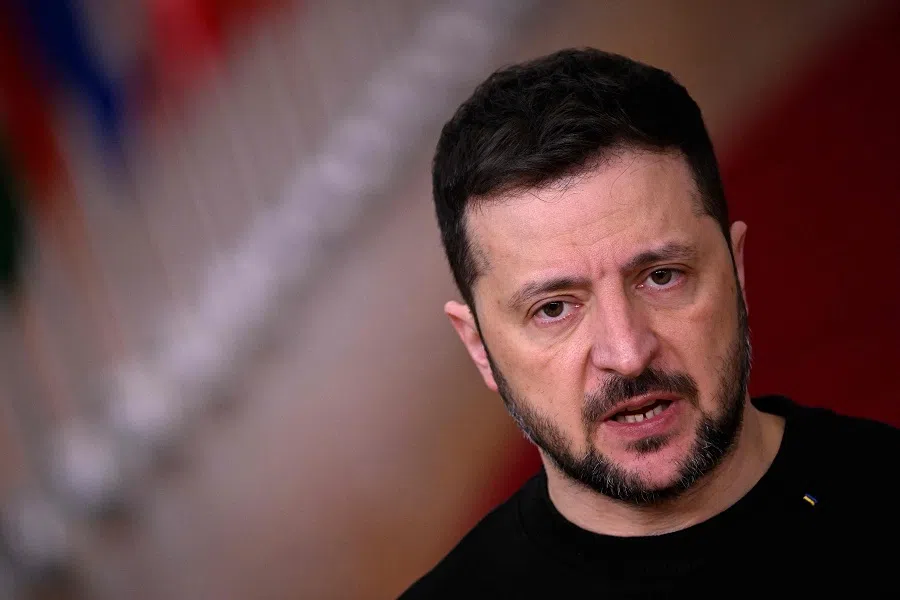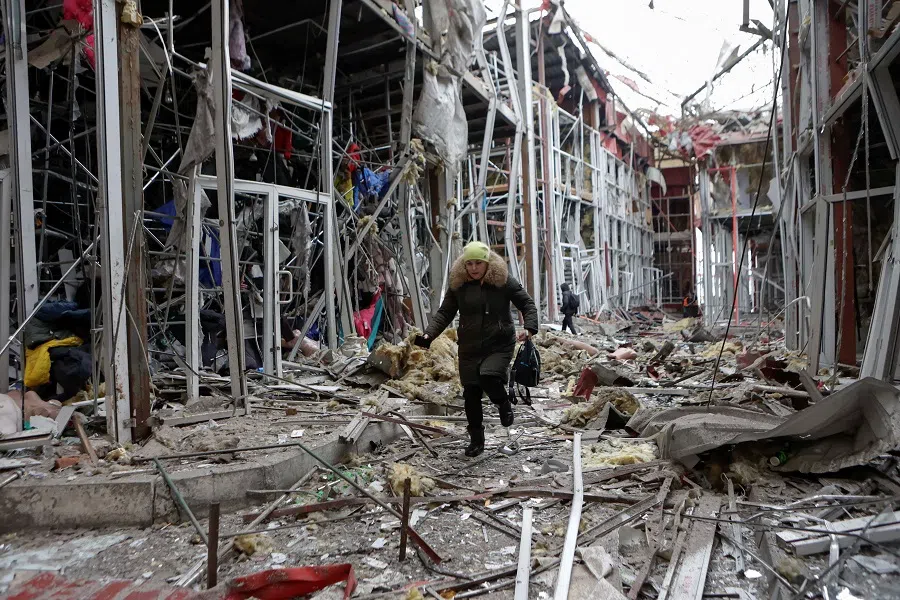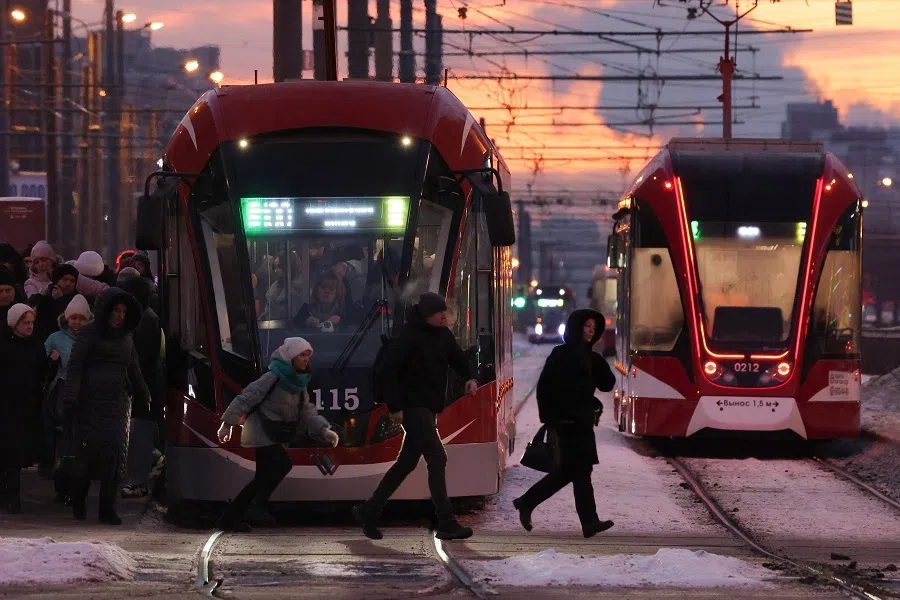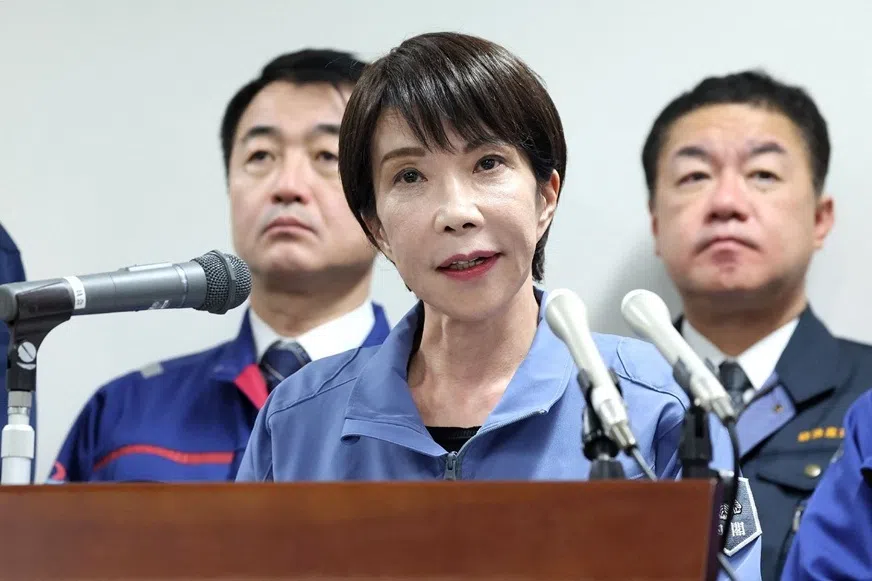Three years on: Winners and losers of the ongoing Russia-Ukraine war
Who benefits the most from the Russia-Ukraine war and who loses out the most? As the Russia-Ukraine war passes its third year and initial ceasefire talks begin, Lianhe Zaobao correspondent Yu Zeyuan assesses the impact of the war on various stakeholders, including the EU, the US and China.

On 24 February this year, the Russia-Ukraine war reached its third anniversary. The conflict — the longest and with the most casualties in Europe since World War II — has not only inflicted massive losses on Ukraine and Russia, it has also deeply affected the whole of Europe. Recently, under the forceful “mediation” of the Donald Trump administration, the Russia-Ukraine war could see a new turning point.
On 22 February, US White House Press Secretary Karoline Leavitt told the media that Trump and his team were focused on continuing negotiations with both sides to end the conflict, and that Trump was very confident that he could conclude the negotiations within the week.
However, it is currently difficult for observers to gauge whether this can indeed be achieved. What is certain is that even if there is progress in the negotiations, the Russia-Ukraine war is unlikely to end quickly. The reason is simple — neither side currently possesses the conditions or willingness for a ceasefire.
The war has also been devastating for Russia, causing significant casualties and domestic economic depression. But at this point, Russia is unlikely to agree to a ceasefire as it has not accomplished its goals.
Both Ukraine and Russia are the war’s biggest losers
At the onset of the war, the Russian military launched a blitzkrieg attack, invading Ukrainian territory from multiple directions in an attempt to defeat Ukraine in one fell swoop. With the Ukrainian forces’ staunch resistance, the Russian military was forced to retreat. By 2023, the Russia-Ukraine battlefield had reached a stalemate. After 2024, Russian forces gradually advanced in the eastern regions of Ukraine, while Ukraine also penetrated Russia’s Kursk region.
Currently, Russian forces continue to maintain an offensive in eastern Ukraine while attempting to expel Ukrainian forces occupying Kursk. Since the Trump administration took office, US support for Ukraine has markedly waned. The US has even shown signs of coercing Ukraine to negotiate with Russia by placing Ukraine under unprecedented pressure both on and off the battlefield.

After three years of harsh warfare, Ukraine has suffered massive casualties as large areas of its eastern territory have fallen. It is also heavily reliant on external aid to sustain the war and its economy. If a ceasefire occurs, the Ukrainian authorities would struggle to reclaim lost territories and justify their actions internally; even the European Union (EU) countries, which have consistently supported Ukraine in resisting Russia, might find this unsatisfactory.
The war has also been devastating for Russia, causing significant casualties and domestic economic depression. But at this point, Russia is unlikely to agree to a ceasefire as it has not accomplished its goals. They have not recovered the lost territory of Kursk, annexed the four eastern Ukrainian regions, or prevented Ukraine from joining NATO. Russian President Vladimir Putin would also find it difficult to justify a ceasefire domestically.
... even if the US could pressure both sides into a temporary ceasefire, the conflicts and tensions between Russia and both Ukraine and the EU are unlikely to be resolved in the short term.
A ceasefire possible, but on Russian and American terms
The biggest variable in the Russia-Ukraine war is the US. Presently, the Trump administration appears to be highly determined to achieve a ceasefire between Russia and Ukraine — even if it means bypassing Ukraine and European allies to negotiate with Russia. Trump is skilled at “applying maximum pressure”, but in the context of the Russia-Ukraine conflict, he has used this strategy on Ukraine. Despite having the support of EU countries, the battered Ukrainian government may find it difficult to withstand US pressure, and have no choice but to negotiate with Russia.
Russia is certainly willing to negotiate, but given its relatively advantageous position on the battlefield and the fact that the US initiated reconciliation, its demands are likely to be high. It is expected that Russia will not only require the withdrawal of Ukrainian forces from Kursk and the retention of the long-annexed Crimea, but also look to capture the four eastern Ukrainian regions and demand assurances that Ukraine will not join NATO.
Meanwhile, Ukraine and the EU will demand the complete withdrawal of Russian forces from the territory of Ukraine, reparations for damages, and even the prosecution of war criminals. Otherwise, it would be a humiliating loss of sovereignty for Ukraine, and the EU would also be unable to justify such an outcome both internally and externally. Thus, even if the US could pressure both sides into a temporary ceasefire, the conflicts and tensions between Russia and both Ukraine and the EU are unlikely to be resolved in the short term.
... both sides will likely engage in negotiations while continuing to fight, eventually reaching a long-term ceasefire; a peace treaty will be hard to come by.

At present, the most likely outcome of the Russia-Ukraine war is not a complete victory for either Russia or Ukraine. Instead, under pressure and mediation from the US, both sides will likely engage in negotiations while continuing to fight, eventually reaching a long-term ceasefire; a peace treaty will be hard to come by. Just like the Korean War in the 1950s, where the warring parties only signed an armistice agreement, South Korea and North Korea have yet to sign a formal peace treaty to this day.
The Russia-Ukraine war resulted in heavy damages for both sides, while European countries have also suffered severe shocks to their energy supplies and economic recovery. Essentially, both Russia and Ukraine, as well as Europe as a whole, are losers in this war. But this war has also benefited a few countries; the biggest winner is the US, followed by China.
China is also a winner in the Russia-Ukraine war. After the outbreak of the war, China adopted a mediating stance, benefiting from both sides.
The war’s biggest winners: the US and China
The Russia-Ukraine war has significantly weakened Russia’s influence in Eastern Europe, the Middle East and Central Asia, while strengthening the cohesion of NATO. As the dominant force within NATO, the US has solidified its leadership role in European security through the war. At the same time, the US is also the primary supplier of arms to Ukraine. Coupled with increased military spending by NATO countries, American defence contractors have reaped substantial profits.
The war has also led to a significant reduction in Russian energy exports to Europe, forcing Europe to import substantial quantities of higher-priced liquefied natural gas and other energy products from the US. The recent US pressure on Ukraine to reach a minerals deal is another example of the US leveraging the Russia-Ukraine war for its own gain.
China is also a winner in the Russia-Ukraine war. After the outbreak of the war, China adopted a mediating stance, benefiting from both sides. It called for respect for Ukraine’s territorial integrity on the one hand, while continuing to maintain close economic and trade ties with Russia on the other. Although the US and the EU have repeatedly accused China of providing Russia with dual-use goods, effectively supporting Russia’s invasion of Ukraine, China insists on its right to develop normal trade relations with Russia.

China has also diversified its energy supply by greatly increasing energy imports from Russia. Thanks to strict Western sanctions against Russia, Chinese firms dealing in automobiles, machinery and electronic products have made inroads into the Russian market and filled the void left behind by retreating Western, Japanese and South Korean companies.
At the same time, China has also strengthened economic and trade cooperation with Central Asian countries and advanced the construction of the China-Kyrgyzstan-Uzbekistan railway, a project long obstructed by Russia. China and Russia are also deepening cooperation in developing Russia’s Far East, which greatly benefits the revitalisation of China’s northeast region.
But beyond these gains, the brutal Russia-Ukraine war has been ongoing for three years. It is not only a tragedy for both Russia and Ukraine, but also a tragedy for humanity. A ceasefire and a negotiated settlement would be the best possible outcome.
This article was first published in Lianhe Zaobao as “俄乌战争三周年谁是赢家?”.



![[Big read] China’s 10 trillion RMB debt clean-up falls short](https://cassette.sphdigital.com.sg/image/thinkchina/d08cfc72b13782693c25f2fcbf886fa7673723efca260881e7086211b082e66c)

